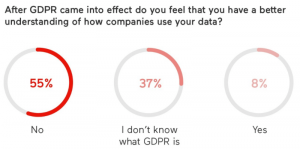— July 24, 2018
Dee sat in her office tensely biting her pencil. As the new sales manager, she was feeling a combination of anger, and overwhelming confusion as she learned that one of the newest, but potentially larger clients she had worked to obtain was backing out of an important deal. As is the case in a situation like this, there was more than enough blame to go around, but also enough ambiguity in the situation to create real confusion as to how to win back the client.

JESHOOTScom / Pixabay
In that overwhelming moment, the owner of the franchise called a meeting between her and the installation manager. She seethed in anger over a failure in the installation managers handling of the customer but also knew her salesperson had failed to maintain the after-sale communication that could have saved the deal.
She dreaded going into the owner’s office. She expected that she would hold her more accountable for the failure than warranted, and would not place the blame on the installation manager. Dee assumed an emotionally defensive posture and sat in front of the owner’s desk, and next to her team member, the owner spoke. “I want to thank you both for remaining so positive,” she opened, “and for doing the best you could in this situation to try to get the deal done.”
Dee spoke, “I feel embarrassed that this happened. I had big dreams for hitting our goals in my first three months. I am sorry for the problem.” The installation manager chimed in, “Me too. I wanted to help you start this new position with the best possible numbers. I wish that our department was able to do better.”
At that moment, with just a few words, the tension that filled the air dissolved as fast as sugar cubes in hot coffee. This business scenario is not atypical – problems occur all the time. It has happened in the C-Suite, owner’s offices, and among team members probably since the beginning of business itself. The difference is that the tone of this meeting was predicated on leadership empathy. And unlike other meetings where leaders have not led with empathy, this meeting turned to discovering the strengths of the departments so that the team could maximize the next opportunity.
When leaders don’t lead with empathy, as Dee’s franchise owner did, blame-shifting might take place, or passive-aggressive communication might emerge between different department heads. But in this case, the franchise owner led with empathy. She started the meeting probably knowing that there was tension in the air, but skillfully used her leadership position to set the tone and topic of the meeting.
Leadership empathy is a skill that is developed. Leaders often take for granted that others will understand they are concerned and care about the outcome of a situation beyond a profit. This is not a given – people only know the content of a communication by the words that are used. Practicing empathy is something that will go a long way in clearing up confusion, letting your employees or followers know you care, and managing tense situations after a difficult loss. Here are three empathic statements you can lead with as you communicate with team members today. Practice using them today even if there is not a problem, and they will come more naturally and be more effective when there is.
“I’m glad you are more familiar with this situation. Can you help me understand what’s going on here?” (You are validating the other persons lead or experience.)
“Thank you for the good work! I will shoot you a message later just to check in on our progress.” (Then actually send a message.)
“I understand where you are coming from – I had a similar frustration/problem/concern earlier. Here is what I learned…” (and then share your learning.)
The heart of leadership empathy is intentionally creating an equal playing field where you maintain your own emotions to support someone who might be on the edge of losing their emotions. Leadership empathy is about expressing a willingness to share a problem and to stay in a solution-oriented mode rather than shifting to a blame-passing mode. It is important to let those who are looking to you know that you understand their struggles and that you care about the process as well as the outcome. At its core, leadership empathy is about kindness and assertiveness rather than aggression. Leaders who practice empathy are leaders who engage teams, change culture, and build affirmative identity.
Business & Finance Articles on Business 2 Community
(25)






